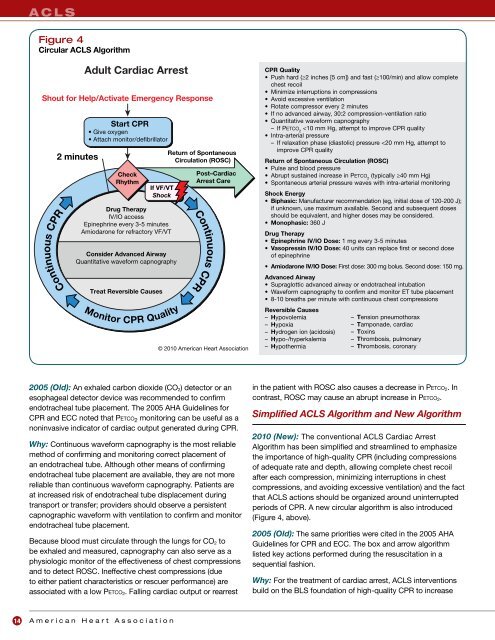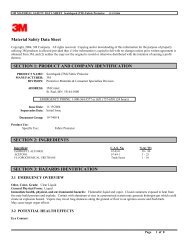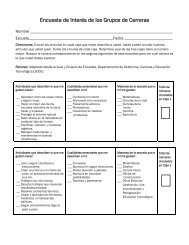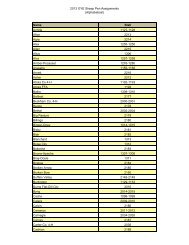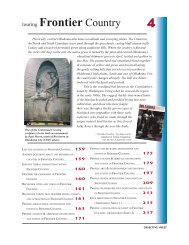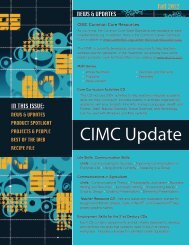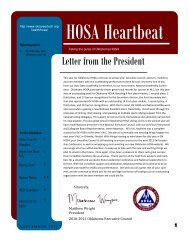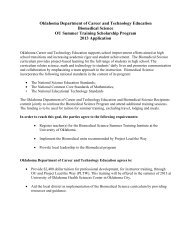Highlights of the 2010 Guidelines for CPR and ECC - ECC Guidelines
Highlights of the 2010 Guidelines for CPR and ECC - ECC Guidelines
Highlights of the 2010 Guidelines for CPR and ECC - ECC Guidelines
You also want an ePaper? Increase the reach of your titles
YUMPU automatically turns print PDFs into web optimized ePapers that Google loves.
A C L S<br />
Figure 4<br />
Circular ACLS Algorithm<br />
Adult Cardiac Arrest<br />
Shout <strong>for</strong> Help/Activate Emergency Response<br />
2 minutes<br />
Continuous <strong>CPR</strong><br />
Start <strong>CPR</strong><br />
• Give oxygen<br />
• Attach monitor/defibrillator<br />
Check<br />
Rhythm<br />
If VF/VT<br />
Shock<br />
Drug Therapy<br />
IV/IO access<br />
Epinephrine every 3-5 minutes<br />
Amiodarone <strong>for</strong> refractory VF/VT<br />
Consider Advanced Airway<br />
Quantitative wave<strong>for</strong>m capnography<br />
Treat Reversible Causes<br />
Monitor <strong>CPR</strong> Quality<br />
Return <strong>of</strong> Spontaneous<br />
Circulation (ROSC)<br />
Post–Cardiac<br />
Arrest Care<br />
Continuous <strong>CPR</strong><br />
© <strong>2010</strong> American Heart Association<br />
<strong>CPR</strong> Quality<br />
• Push hard (≥2 inches [5 cm]) <strong>and</strong> fast (≥100/min) <strong>and</strong> allow complete<br />
chest recoil<br />
• Minimize interruptions in compressions<br />
• Avoid excessive ventilation<br />
• Rotate compressor every 2 minutes<br />
• If no advanced airway, 30:2 compression-ventilation ratio<br />
• Quantitative wave<strong>for</strong>m capnography<br />
– If Petco 2<br />


